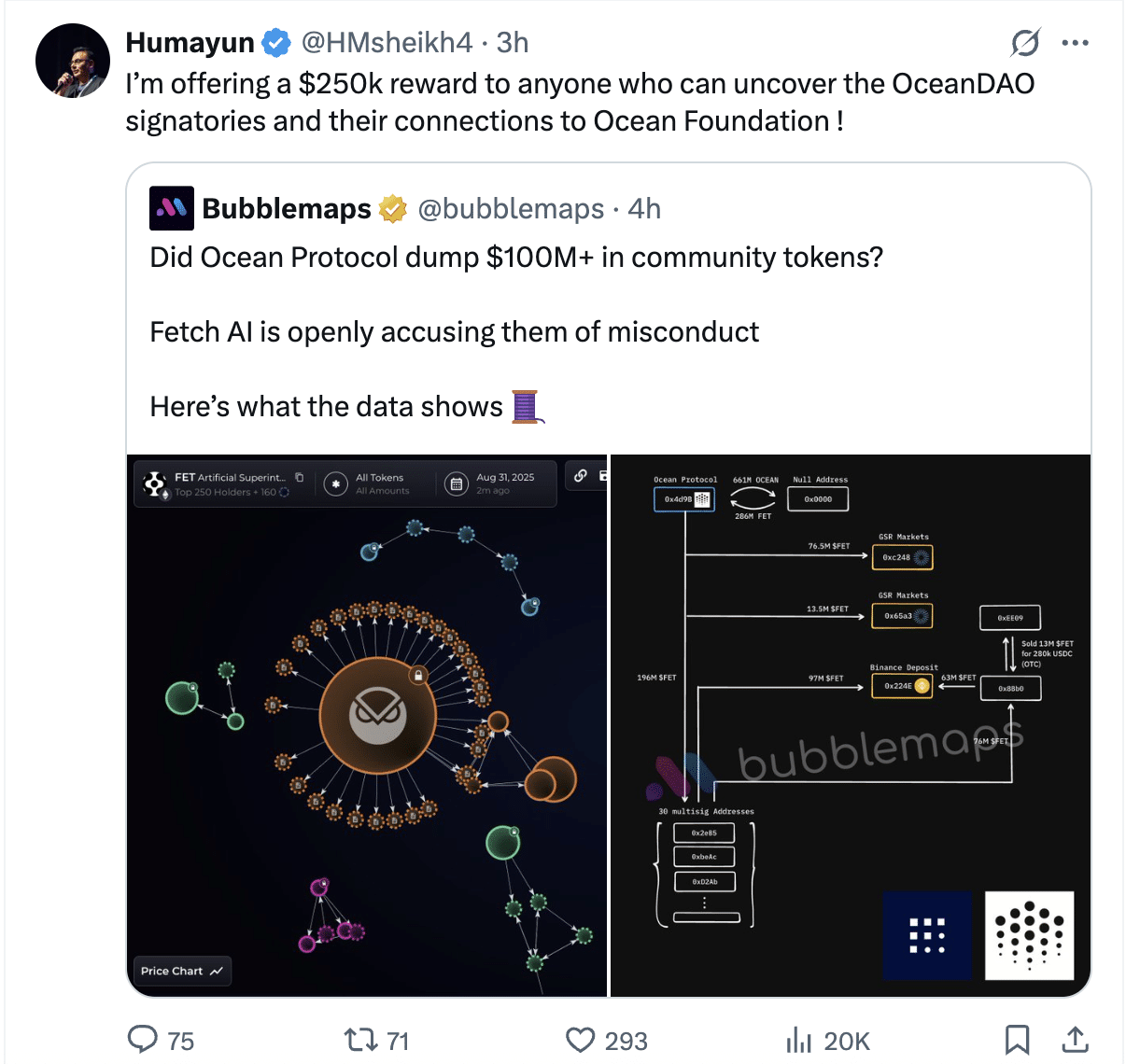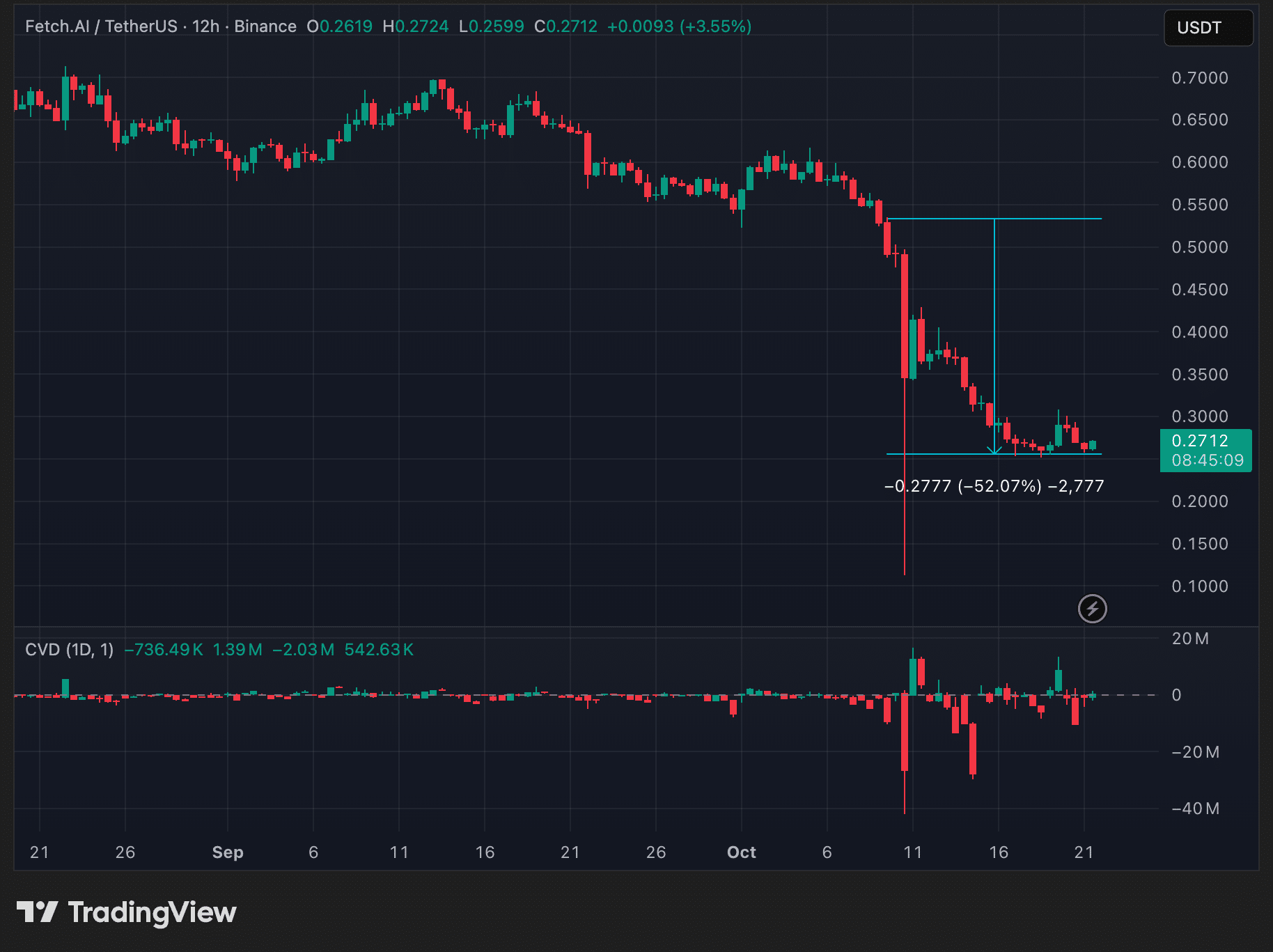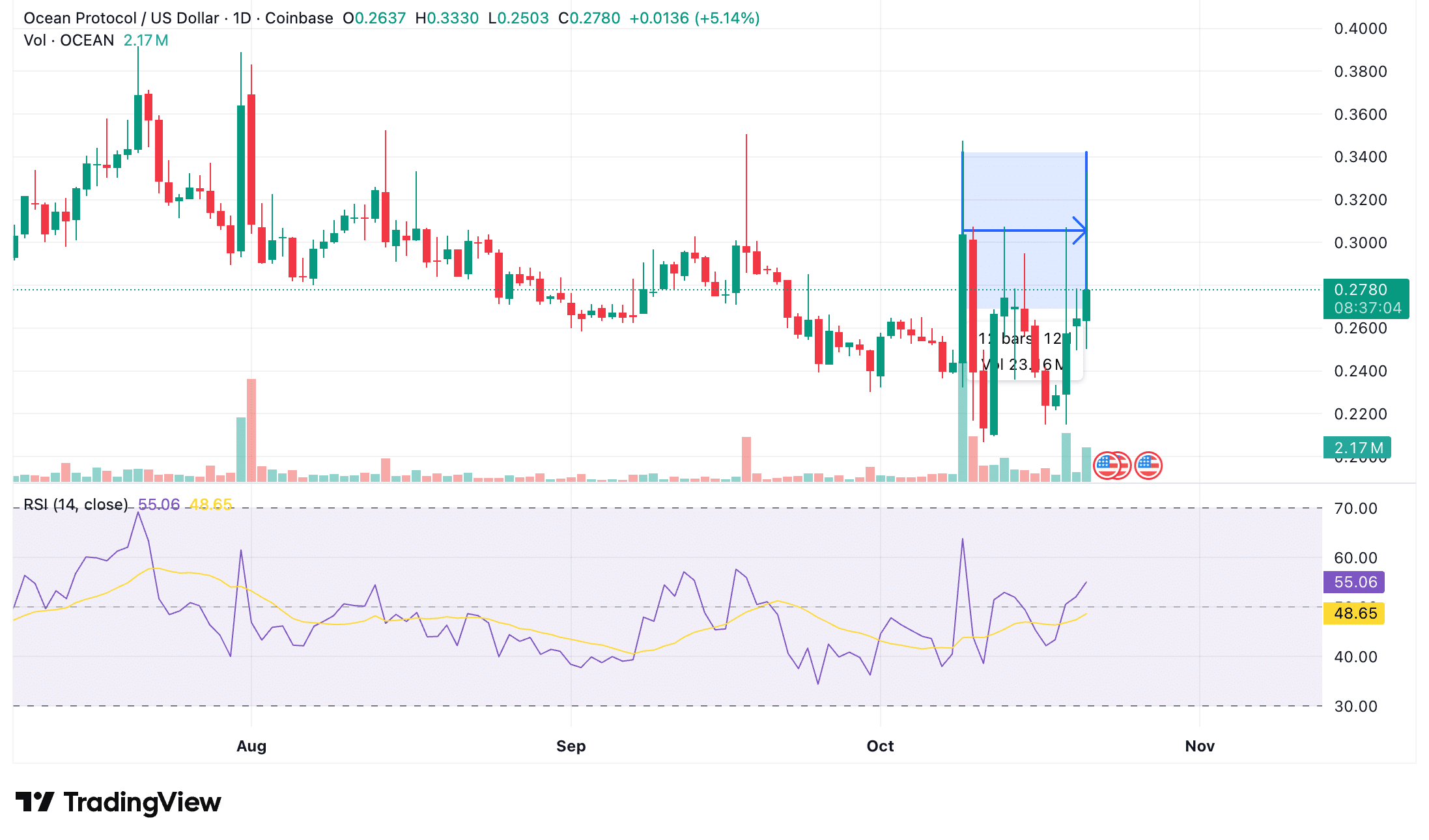Ocean Protocol’s conversion of 661 million $OCEAN tokens into 286 million $FET tokens, valued at $191 million, has sparked controversy within the ASI alliance. On-chain data from Bubblemaps reveals transfers to exchanges, prompting accusations of misconduct from Fetch.AI’s CEO.
-
Ocean Protocol executed a major token swap on July 1, converting assets amid alliance tensions.
-
On-chain analytics traced movements to multiple addresses and centralized exchanges like Binance.
-
$FET token price fell over 52% in October, while $OCEAN saw a rebound, reflecting market divergence.
Ocean Protocol FET conversion ignites ASI alliance dispute: On-chain data exposes $191M token swap. Explore transparency issues and market impacts in AI crypto projects. Stay informed on Web3 developments.
What is the Ocean Protocol FET conversion controversy?
Ocean Protocol FET conversion controversy centers on a significant token exchange within the Artificial Superintelligence (ASI) alliance. On July 1, an Ocean Protocol multisig wallet swapped 661 million $OCEAN for 286 million $FET tokens, worth approximately $191 million at the time. This move, tracked by on-chain analytics firm Bubblemaps, has fueled debates about transparency and asset management as tensions rise following Ocean’s alliance withdrawal.
How did the token transfers unfold according to on-chain data?
Following the initial conversion, the $FET tokens were distributed across 30 new addresses. Roughly 196 million $FET were moved, with most directed to Binance or OTC provider GSR Markets between late August and mid-October. Bubblemaps data indicates about 270 million $FET, valued at around $120 million, ended up on centralized exchanges, a pattern linked to potential liquidations. This activity has raised questions about the handling of community-allocated funds originally set for incentives and data farming in the ASI framework.
Frequently Asked Questions
What led to Ocean Protocol’s withdrawal from the ASI alliance?
Ocean Protocol announced its exit from the Artificial Superintelligence alliance on October 9, stating it would de-peg and relist $OCEAN on exchanges. The decision preserved control over 51% of its token supply, but omitted details on prior $FET transfers, leading to investor concerns and partner disputes over treasury transparency.
Why did Fetch.AI’s CEO label the actions as misconduct?
Fetch.AI CEO Humayun Sheikh described the token sales as a potential rug pull if executed by an independent project, highlighting issues with community token handling post-merger. He emphasized the need for accountability in shared alliance resources. In response, Ocean Protocol’s co-founder Bruce Pon rejected the claims as baseless rumors, noting preparations for a formal reply and ongoing legal measures.
Key Takeaways
- Token Swap Scale: Ocean Protocol converted 661 million $OCEAN into 286 million $FET on July 1, totaling $191 million, per Bubblemaps analysis.
- Alliance Tensions: The ASI merger in early 2024 combined tokens under $FET, but Ocean’s October withdrawal and transfers exposed governance fractures.
- Market Impacts: $FET declined 52% from $0.55 to $0.27 between October 9-21, while $OCEAN rose from $0.25 to $0.30, signaling divergent investor sentiments.
What happened?
Ocean Protocol FET Conversion Traced
Data from on-chain analytics firm Bubblemaps showed that Ocean Protocol converted 661 million $OCEAN into 286 million $FET on July 1. This swap, valued at approximately $191 million, involved subsequent distributions to various addresses and exchanges.
ASI Alliance Background
The Artificial Superintelligence alliance, formed by merging Ocean Protocol, Fetch.AI, and SingularityNET in early 2024, aimed to unify AI-driven blockchain efforts under a single $FET token framework. Ocean retained significant control over its assets post-merger.
Bubblemaps Traces Major Token Movements
Bubblemaps’ report detailed the multisig wallet’s actions on July 1, converting the $OCEAN holdings into $FET. The tokens were then fragmented, with large portions routed to centralized platforms in a timeline spanning late August to mid-October.


Source: X
These transfers align with behaviors typically observed in asset liquidations, though Bubblemaps noted it could not verify outright sales. The pattern underscores ongoing scrutiny of how merged entities manage shared tokenomics in decentralized AI ecosystems.
Alliance Formation and Emerging Fractures
In early 2024, the ASI alliance integrated Ocean Protocol, Fetch.AI, and SingularityNET to advance decentralized artificial intelligence applications. The merger consolidated tokens into $FET, with Ocean Protocol holding onto a majority of its $OCEAN reserves for designated community programs.
Despite this collaborative intent, cracks appeared as Ocean Protocol declared its departure on October 9. The announcement focused on relisting $OCEAN independently but left questions unanswered regarding the fate of converted assets.
Response from Fetch.AI and Ocean Protocol
Humayun Sheikh, CEO of Fetch.AI, voiced strong objections, labeling the token movements as misconduct equivalent to a rug pull in a non-allied context. His statements highlighted risks to investor trust within the unified framework.
Ocean Protocol co-founder Bruce Pon countered by deeming the accusations unfounded. He assured stakeholders of an impending official clarification and mentioned active legal consultations to address the claims.
Market Dynamics in the Wake of the Dispute
The controversy triggered notable price shifts. Data from TradingView shows $FET experiencing a sharp 52% drop from $0.55 to $0.27 over October 9 to 21, reflecting eroded confidence in the alliance’s stability.


Source: TradingView
In comparison, $OCEAN tokens gained ground, climbing from $0.25 to $0.30 during the same interval. The Relative Strength Index (RSI) for $OCEAN hovered around 55, indicating a recovery from prior oversold levels and potential bullish momentum.


Source: TradingView
This price divergence illustrates how market participants may perceive Ocean’s standalone path as a positive development, while the broader ASI structure grapples with unresolved uncertainties.
Future Implications for the ASI Ecosystem
With legal proceedings in motion and demands for detailed disclosures intensifying, both Ocean Protocol and Fetch.AI must navigate governance challenges. The episode serves as a critical examination of transparency in Web3 collaborations, particularly in the AI-crypto intersection.
Investors and developers alike will monitor how these resolutions affect token utilities and alliance viability, potentially setting precedents for future decentralized partnerships.
Conclusion
The Ocean Protocol FET conversion controversy highlights vulnerabilities in the ASI alliance’s structure, from token management to inter-project trust. As on-chain transparency becomes paramount in AI blockchain initiatives, ongoing dialogues and legal outcomes will shape the trajectory of ASI alliance disputes. Stakeholders should track updates closely to assess long-term impacts on decentralized AI innovation and investment strategies.
